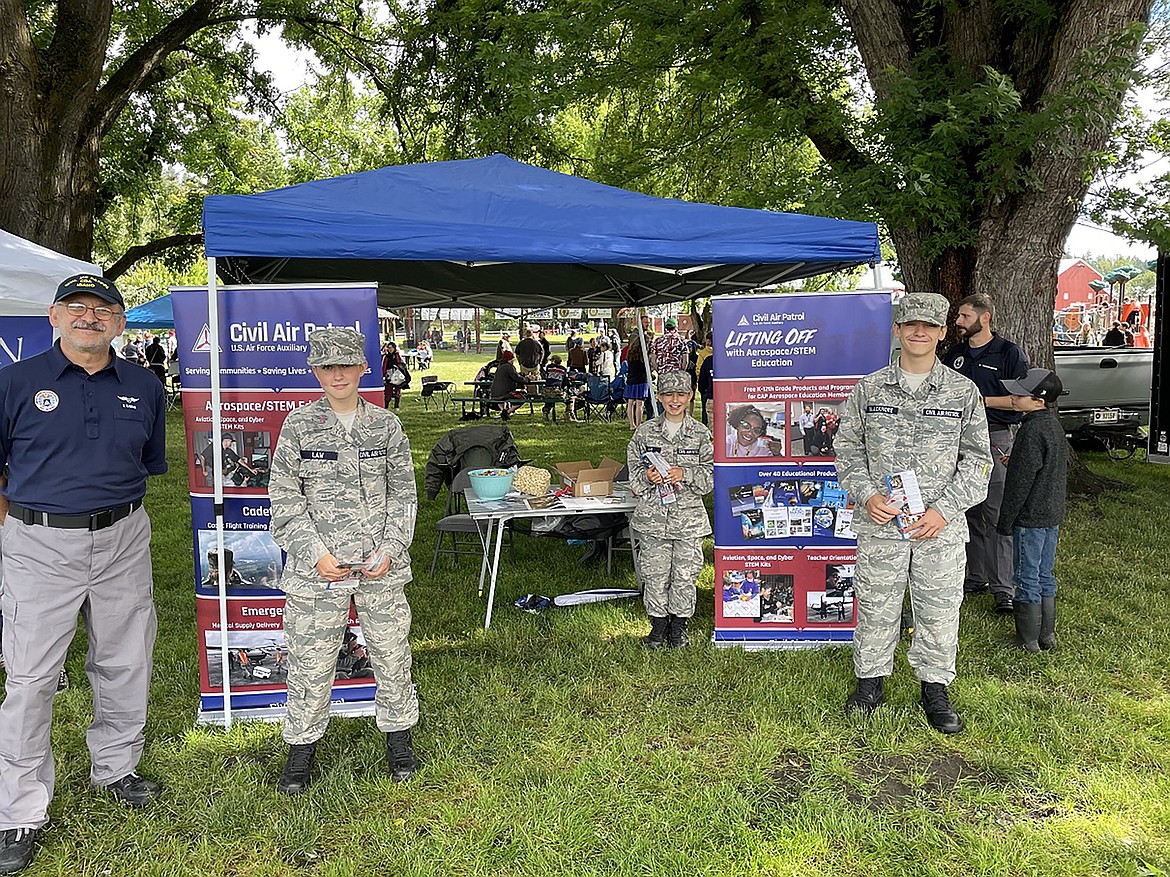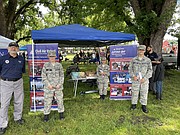Civil Air Patrol arrives in Bonners Ferry
Civil Air Patrol is now available to young people and adults in Bonners Ferry interested in aviation and in serving the community.
“Some may not have heard of Civil Air Patrol even though the organization has been in existence for more than 70 years,” said Maj. Kambiz Kamiab, CAP Idaho Wing Director of Aerospace Education. “We often joke that Civil Air Patrol is one of the Air Force’s best-kept secrets.”
CAP was founded in 1941 as a way to mobilize civilian pilots and aviation resources for national defense, Kamiab said.
“During this time, civilian pilots in small aircraft were tasked with patrolling the eastern and western shores of the United States for enemy submarines,” Kamiab said.
After World War II, when the Army Air Corps officially became the United States Air Force, CAP was designated as an auxiliary wing of the USAF, a designation which remains to this day.
Since its inception in 1941, CAP has expanded its mission and purpose as a non-profit public service organization to include emergency service and disaster relief missions both in the air and on the ground. Kamiab said the Coeur d’Alene squadron has been credited with finding many lost persons and finding at least two downed aircraft, including one belonging to Pamela Riddle Bird, the widow of Dr. Forrest Bird, in October 2015.
With a mission of “volunteers serving America’s communities, saving lives, and shaping futures,” Kamiab said the organization achieves that goal through three primary functions.
Emergency services: Using both air and ground resources, CAP provides emergency services in coordination with state, local, and federal agencies. These missions can include search and rescue operations for downed aircraft, missing persons, airborne photography, medical supplies, and equipment delivery, as well as COVID-19 relief operations. Air Force Rescue Coordination Center has credited CAP with saving 40 lives to date in 2022.
Aerospace education: An awarding-winning aerospace education program promoting aerospace, aviation, and STEM-related — science, technology, engineering, and mathematics — careers with engaging, research-based, hands-on curriculum and activities. CAP’s wide range of STEM units, lessons, and activities are available to all educators to enrich STEM education and encourage student interest and engagement with STEM fields and careers.
Cadet programs: Perhaps the most important element of the modern-day Civil Air Patrol exists in its Cadet programs, Kamiab said. The whole of Civil Air Patrol’s mission statement and the core of CAP’s ability to fulfill its stated purposes resides in the development of the Civil Air Patrol cadets.
Kamiab said CAP’s Cadet Program promotes leadership, fitness, and character development to produce the nation’s next generation of aerospace leaders, astronauts, pilots, engineers, and scientists. Nationally, Civil Air Patrol has 27,000 youth cadets between the ages of 12-20 led by over 6,500 trained and vetted adult volunteers. While there is no military obligation, Civil Air Patrol provides cadets with leadership skills, aerospace technology experience, commitment to lifelong physical and academic fitness, and character education that readies cadets for any post-high-school career or pursuit.
In addition to a weekly meeting, cadets have many other opportunities offered by CAP. All cadets can receive up to six orientation rides in one of CAP’s aircraft with a qualified CAP pilot. The flights follow a syllabus with various phases of maneuvers. Also, depending on their interest, cadets can get trained and qualified as mission radio operators, ground team, aircraft crew, mission personnel, and many other specialties. In addition, CAP offers scholarships if a cadet is interested in learning to fly, Kamiab said.
Senior members do not have to be pilots. There are many specialties that a senior member can select with opportunities to train. If however, a senior member wishes to fly, Kamiab said CAP offers training to become a scanner or an observer.
CAP also includes special programs for all educators. By joining CAP as an educator, you will have access to all of the online resources as well as STEM kits at no extra charge.
All CAP’s senior members are volunteers and go through a background check. They are also required to go through various training courses including cadet protection before officially serving in a flight or a squadron.
“The arrival of the Civil Air Patrol in Boundary County is exciting news for parents, educators, and champions of youth programs in our community,” Kamiab said. “Before the founding of a flight — the term used for the smallest group of regularly meeting Civil Air Patrol members — in Boundary County, interested participants had to travel to Coeur d’Alene to participate in cadet programs. The formation of a local flight group brings the benefits of this remarkable program to our youth.”
The new Bonners Ferry Civil Air Patrol Flight has already grown to 18 members including six senior members and 12 cadets with new members joining almost weekly.
The flight meets Tuesday nights from 6-8:30 p.m. at the high school library. The cadets learn about leadership and character development and participate in lectures and hands-on experiments on aeronautics and air space topics, as well as drills and physical training. Cadets can look forward to participating in community service projects, completing modules to gain rank, and acquiring flight hours with Civil Air Patrol pilots.
The flight is led by Major Kambiz Kamiab and Tech. Sargent Damen Therkildsen. Further information regarding Civil Air Patrol can be found on the National website at www.gocivilairpatrol.com; or by email at kkamiab@cap.gov or dtherkildsen@idwgcap.org



